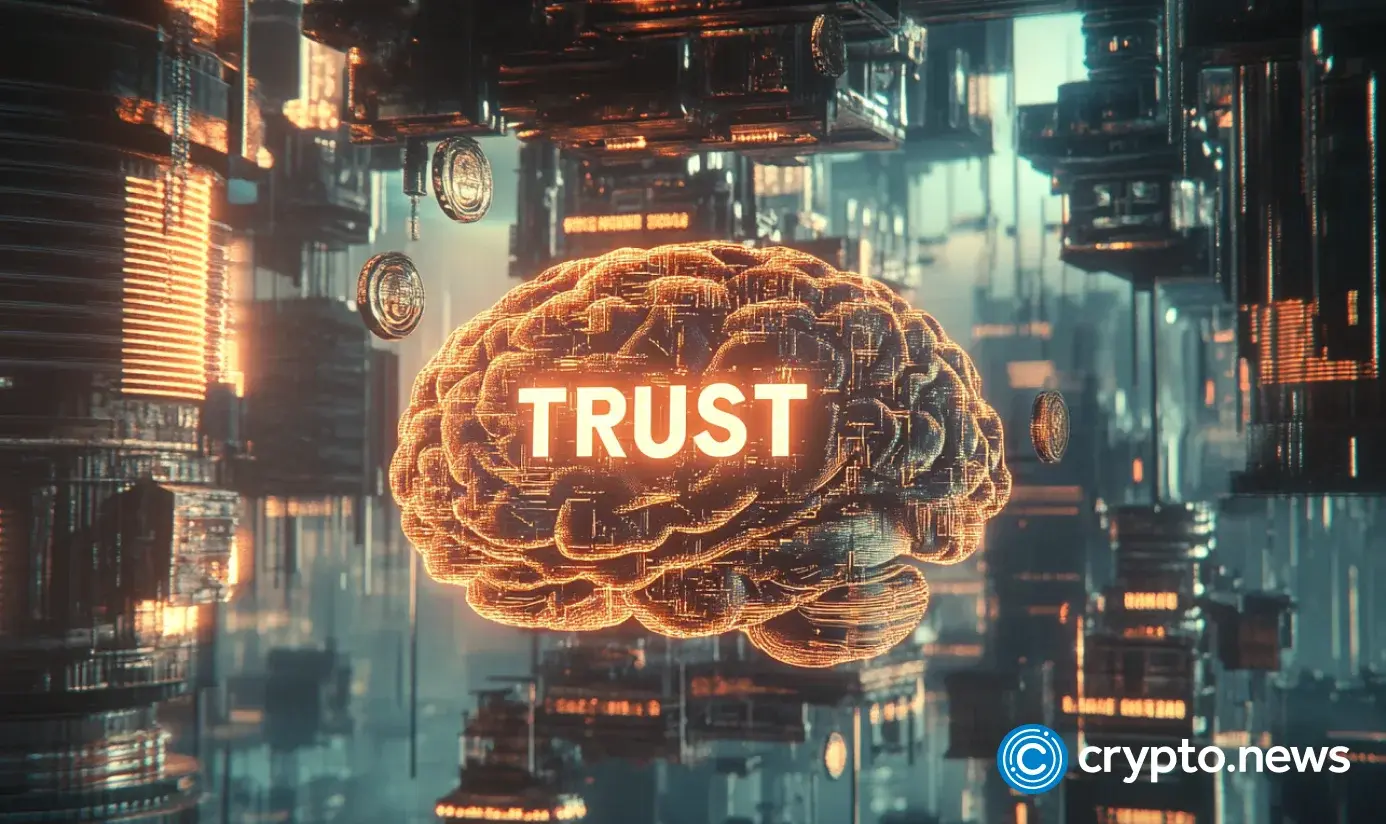
Disclosure: The views and opinions expressed here belong solely to the author and do not represent the views and opinions of crypto.news’ editorial.
In a rapidly expanding digital ecosystem, the ongoing AI revolution has fundamentally transformed how we live and work, with 65% of all major organizations regularly employing AI tools like ChatGPT, Dall-E, Midjourney, Sora, and Perplexity.
This marks a nearly twofold increase from ten months ago, with experts estimating this metric to grow exponentially in the near future. The meteoric rise has come bearing a major shadow—despite the market’s projected value set to reach $15.7 trillion by 2030, a growing trust deficit is threatening to ruin its potential.
Recent polling data revealed that over two-thirds of US adults have little to no confidence in the information provided by mainstream AI tools. This is, thanks in large part, to the fact that the landscape is currently dominated by three tech giants namely Amazon, Google, and Meta—who reportedly control over 80% of all large-scale AI training data collectively.
These companies operate behind an opaque veil of secrecy while investing hundreds of millions in systems that remain black boxes to the outside world. While the justification given is ‘protecting their competitive advantages,’ it has created a dangerous accountability vacuum that has bred immense mistrust and mainstream skepticism toward the technology.
Addressing the crisis of confidence
The lack of transparency in AI development has reached critical levels over the past year. Despite companies like OpenAI, Google, and Anthropic spending hundreds of millions of dollars on developing their proprietary large language models, they provide little to no insight into their training methodologies, data sources, or validation procedures.
As these systems grow more sophisticated and their decisions carry greater consequences, the lack of transparency has created a precarious foundation. Without the ability to verify outputs or understand how these models arrive at their conclusions, we are left with powerful yet unaccountable systems that require closer scrutiny.
Zero-knowledge technology promises to redefine the current status quo. ZK protocols allow one entity to prove to another that a statement is true without revealing any additional information beyond the validity of the statement itself. As an example, a person can prove to a third party that they know the combination of a safe without revealing the combination itself.
This principle, when applied in the context of AI, helps facilitate new possibilities for transparency and verification without compromising proprietary information or data privacy.
Also, recent breakthroughs in zero-knowledge machine learning (zkML) have made it possible to verify AI outputs without exposing their superseding models or data sets. This addresses a fundamental tension in today’s AI ecosystem, which is the need for transparency versus the protection of intellectual property (IP) and private data.
We need AI, and also transparency
The use of zkML in AI systems opens up three critical pathways to rebuilding trust. Firstly, it reduces issues around LLM hallucinations in AI-generated content by providing proof that the model hasn’t been manipulated, altered its reasoning, or drifted from expected behavior due to updates or fine-tuning.
Secondly, zkML facilitates comprehensive model auditing wherein independent players can verify a system’s fairness, bias levels, and compliance with regulatory standards without requiring access to the underlying model.
Finally, it enables secure collaboration and verification across organizations. In sensitive industries like healthcare and finance, organizations can now verify AI model performance and compliance without sharing confidential data.
By providing cryptographic guarantees that ensure proper behavior while protecting proprietary information, these offerings present a tangible solution that can balance the competing demands of transparency and privacy in today’s increasingly digital world.
With ZK tech, we can have innovation and trust co-existing with one another, ushering in an era where AI’s transformative potential is matched by robust mechanisms for verification and accountability.
The question is no longer whether we can trust AI, but rather how quickly we can implement the solutions that make trust unnecessary through mathematical proofs. One thing for sure is that we are looking at interesting times ahead.

Source link


